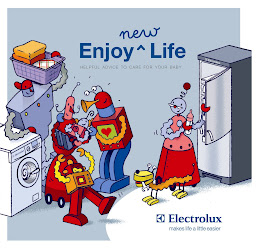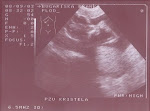
Newborns sleep a lot — typically 14 to 18 hours a day during the first week and 12 to 16 hours a day by the time they're a month old. But most babies don't stay asleep for more than two to four hours at a time, day or night, during the first few weeks of life. The result? Lots of sleep for your baby and a very irregular — and tiring — schedule for you. Your job is to respond to your newborn's cues, so you'll probably be up several times during the night to change, feed, and comfort him.
At 6 to 8 weeks of age, most babies begin to sleep for shorter periods during the day and longer periods at night, though most continue to wake up to feed during the night. They also have shorter periods of REM sleep, and longer periods of deep, non-REM sleep. Somewhere between 3 and 6 months, experts say, most babies are capable of sleeping through the night. They're not talking about eight hours, though — they generally mean a stretch of five or six hours.
Some infants sleep for a long stretch at night as early as 6 weeks, but many babies don't reach that milestone until they're 5 or 6 months old and some continue to wake up at night into toddlerhood. You can help your baby get there sooner, if that's your goal, by teaching him good sleep habits from the start.
More...Here are some tips for helping your baby settle down to sleep:
Learn the signs that mean he's tired. For the first 6 to 8 weeks, most babies aren't able to stay up much longer than two hours at a time. If you wait longer than that to put your baby down, he may be overtired and have trouble falling asleep.
Watch your baby for signs that he's tired. Is he rubbing his eyes, pulling on his ear, or developing faint dark circles under his eyes? If you spot these or any other signs of sleepiness, try putting him down to sleep. You'll soon develop a sixth sense about your baby's daily rhythms and patterns, and you'll know instinctively when he's ready for a nap.
Begin to teach him the difference between day and night. For the first few days you won't be able to do much about this. But once your baby is about 2 weeks old, you can start teaching him to
distinguish night from day. How?
When he's alert and awake during the day, interact with him as much as you can, keep the house and his room light and bright, and don't worry about minimizing regular daytime noises like the phone, TV, or dishwasher. If he tends to sleep through feedings, wake him up. At night, don't play with him when he wakes up. Keep the lights and noise level low, and don't spend too much time talking to him. Before long he should begin to figure out that nighttime is for sleeping.
 Consider starting a bedtime routine.
Consider starting a bedtime routine. It's never too early to start trying to follow a
bedtime routine. It can be something as simple as getting your baby changed for bed, singing a lullaby, and giving him a kiss goodnight. Read
here about how to establish a routine and what else can help in getting your baby to sleep.
Give him a chance to fall asleep on his own. By the time he's 6 to 8 weeks old, you can start giving your baby a chance to fall asleep on his own. How? Put him down when he's sleepy but still awake. Some parents think that what they do this early doesn't have an effect, but it does. Babies are learning their sleep habits. If you rock your child to sleep every night for the first eight weeks, why would he expect anything different later on?
Not everyone agrees with this strategy, however. Some parents choose to rock or nurse their babies to sleep because they believe it's normal and natural, because they enjoy it and their baby is thriving and sleeping well, or simply because nothing else seems to work.
Help your baby soothe himself to sleep. Many experts — and experienced parents — recommend putting your baby to bed drowsy but awake, to help him
learn to go to sleep on his own. One way to smooth the transition between your arms and sleep is to make sure your baby has something to look at as he falls asleep.
Baby sleep training. Don't try to impose a sleep schedule or training program on a newborn. Typically, by age 3 months or so, babies have started to develop more of a regular sleep/wake pattern and have dropped most of their night feedings. And somewhere between 3 and 6 months, experts say, most babies are ready for sleep training and are capable of sleeping through the night. Learn about baby sleep training techniques
here.
And finally, keep track on baby's sleeping patterns on a chart. It will help you learn and if necessary adjust baby's sleeping routine. Download a template of sleeping patterns chart
here.
Good luck!
 Today I am 2 months old! I am getting stronger, my cheeks are getting bigger. My cramps are slowly going away, I sleep better, I cry less and I laugh more!
Today I am 2 months old! I am getting stronger, my cheeks are getting bigger. My cramps are slowly going away, I sleep better, I cry less and I laugh more! At this point, I begin to move beyond my early preferences for bright or two-toned objects toward more detailed and complicated designs, colors, and shapes. I see and even try to touch colorful objects: my fish Nemo, Memo, Xhemo, Dimo and Shlomo… Urmo the Clown, my mom’s finger, the stars from my play mat, the singing moon above my bed... My hands are mostly open now and ready to reach out to the world!
At this point, I begin to move beyond my early preferences for bright or two-toned objects toward more detailed and complicated designs, colors, and shapes. I see and even try to touch colorful objects: my fish Nemo, Memo, Xhemo, Dimo and Shlomo… Urmo the Clown, my mom’s finger, the stars from my play mat, the singing moon above my bed... My hands are mostly open now and ready to reach out to the world! In the early days of my life, grabbing was mostly automatic and instinctual and I couldn't let go if I wanted to. Although I can't really grab objects just yet, I can hold things placed in my hands. And, once I wrap my hands around something, I might not let go so easily.
In the early days of my life, grabbing was mostly automatic and instinctual and I couldn't let go if I wanted to. Although I can't really grab objects just yet, I can hold things placed in my hands. And, once I wrap my hands around something, I might not let go so easily. The weather is beautiful these days, so I go out almost every day! I enjoy the sun and the trees outside, the colorful object, the people around me, and even the loud rock’n’roll music can’t change my mind or my sleeping/eating routine!
The weather is beautiful these days, so I go out almost every day! I enjoy the sun and the trees outside, the colorful object, the people around me, and even the loud rock’n’roll music can’t change my mind or my sleeping/eating routine!


















